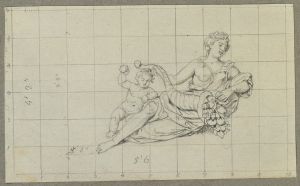
Alder at the edge of a meadow
A hand-painted replica of Max Liebermann’s masterpiece Alder at the edge of a meadow, meticulously crafted by professional artists to capture the true essence of the original. Each piece is created with museum-quality canvas and rare mineral pigments, carefully painted by experienced artists with delicate brushstrokes and rich, layered colors to perfectly recreate the texture of the original artwork. Unlike machine-printed reproductions, this hand-painted version brings the painting to life, infused with the artist’s emotions and skill in every stroke. Whether for personal collection or home decoration, it instantly elevates the artistic atmosphere of any space.
Max Liebermann was a prominent German painter and printmaker, associated with the Impressionist movement. He was born on July 20, 1847, in Berlin, Germany, and became one of the leading figures in the German art world during the late 19th and early 20th centuries. Liebermann is known for his realistic and impressionistic depictions of everyday life, landscapes, and portraits.
"Alder at the Edge of a Meadow" is one of Liebermann's works that exemplifies his skill in capturing the natural world with a sense of immediacy and light. Although specific details about this particular painting are limited, it is consistent with Liebermann's broader body of work, which often focused on serene landscapes and scenes of leisure.
Liebermann's style was heavily influenced by the French Impressionists, particularly Édouard Manet and Edgar Degas, whom he admired. He adopted their techniques of loose brushwork and a focus on the effects of light and atmosphere. This influence is evident in "Alder at the Edge of a Meadow," where Liebermann likely employed a similar approach to capture the interplay of light and shadow in a natural setting.
Throughout his career, Liebermann was associated with the Berlin Secession, an art movement that he helped to establish in 1898. The Berlin Secession was formed as a response to the conservative art establishment in Germany, and it promoted modernist approaches to art. Liebermann served as the president of the Berlin Secession from 1899 to 1911, during which time he played a crucial role in advancing modern art in Germany.
Liebermann's work, including "Alder at the Edge of a Meadow," reflects his interest in capturing the beauty of the natural world and the simplicity of everyday life. His paintings often depict scenes of leisure, such as people enjoying parks, gardens, and beaches. This focus on leisure and nature was a common theme among Impressionist artists, who sought to capture the fleeting moments of modern life.
In addition to his landscapes, Liebermann was also known for his portraits, which often depicted prominent figures of his time. His ability to convey the character and personality of his subjects made him a sought-after portraitist.
Despite his success, Liebermann's career was not without controversy. As a Jewish artist in Germany, he faced anti-Semitic sentiment, particularly during the rise of the Nazi regime. In 1933, he resigned from the Prussian Academy of Arts in protest against the Nazis' policies. Liebermann passed away on February 8, 1935, in Berlin.
Today, Max Liebermann is remembered as one of Germany's most important Impressionist painters. His works are held in major museums and collections around the world, and they continue to be celebrated for their contribution to modern art. "Alder at the Edge of a Meadow," like many of his paintings, captures the essence of his artistic vision and his ability to convey the beauty of the natural world through the lens of Impressionism.


















